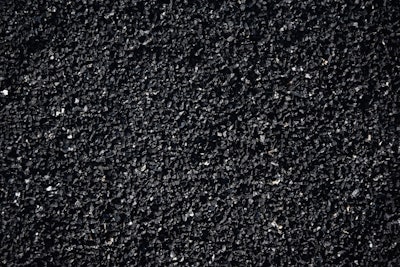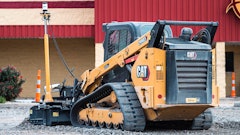
The world has become more invested in reducing its environmental impact and the construction industry has taken its own steps on its journey towards being more environmentally friendly. In the asphalt world, you have the option to use all-new asphalt with virgin materials or you can make a mix with some sort of recycled material.
There are a variety of options when it comes to recycled asphalt. The main three are plastic modified asphalt, rubber modified asphalt, and reclaimed asphalt pavement. Not only are recycled asphalt options better for the environment but they are also more economically beneficial.
A Reused Solution
Replacing asphalt entails removing the old in order to bring in the new. This is not always ideal because it continues to produce more and more waste. Modified asphalt has become much more popular than raw asphalt as of late because of its ability to improve longevity and dependability by modifying asphalt.
Although virgin polymers can be better for asphalt, they aren’t the most realistic option. This is why the industry is starting to use plastic modified asphalt, rubber modified asphalt, and reclaimed asphalt pavement.
 Not only are recycled asphalt options better for the environment but they are also more economically beneficial.@mirsad - adobe.stock.com
Not only are recycled asphalt options better for the environment but they are also more economically beneficial.@mirsad - adobe.stock.com
Plastic World
Plastics have been used extensively throughout the United States for decades and have been mass-produced since before the 1960s. Due to the constant production, use, and disposal of plastics, there is a lot of waste product that is polluting the world. With this in mind, plastic modified asphalt is an excellent solution. There are various types of plastic waste and some are more suited for asphalt than others. Plastics can be incorporated into mixes in a wet or dry process. Each can be tedious and neither is necessarily better than the other. The main difference is that the wet process requires specific equipment while the dry process does not.
Waste plastics will exist with or without the asphalt industry but using them in modified asphalt mixes is a great way of reducing the impact of such pollutants.
Benefits
The use of waste plastics in asphalt mixes is as straightforward as it sounds. Waste plastics are no longer being wasted and can be used for new purposes. The plastic modified asphalt mixes don’t have a large amount of plastics in them but they are still able to significantly reduce carbon emissions.
Plastic waste has the ability to potentially increase the life of asphalt by resisting degradation and improving temperature resistance.
Improvements to be Made
While the process of incorporating waste plastics into asphalt mixes is a good idea and can have many benefits, there is still room for improvement. The processing in particular could be better. It is quite a complicated process for plastic waste to be properly processed in order to be used in asphalt mixes.
Plastic waste can cause decreases in asphalt’s ability to combat cracking and moisture damage. Not all plastics are the same which results in the possibility of variable benefits and results.
A big challenge posed by plastic modified asphalt is the potential for the plastic to degrade and continue breaking down into microplastics. Microplastics already pose a huge threat to the environment, particularly aquatic life.
 While the process of incorporating waste plastics into asphalt mixes is a good idea and can have many benefits, there is still room for improvement.@Konstantin - adobe.stock.com
While the process of incorporating waste plastics into asphalt mixes is a good idea and can have many benefits, there is still room for improvement.@Konstantin - adobe.stock.com
Used Rubber Bouncing Back
Rubber modified asphalt incorporates discarded tire or crumb rubber into an asphalt mixture. Crumb rubber is essentially the scraps from old tires that have been processed into shredded bits. Crumb rubber is mixed with asphalt to create a somewhat resilient product.
Benefits
Rubber modified asphalt can have some big benefits. Like plastic modified asphalt, rubber modified asphalt has a positive impact on the environment. Being able to put waste tires to use and not have them sit in a landfill helps keep pollutants and wastefulness down.
Maintenance frequency is significantly lower than with typical asphalt mix. This not only saves time but also money. Rubber modified asphalt is considerably cheaper than asphalt mix made only with virgin materials.
Rubber modified asphalt can last longer and even improve driver experience. The surface that rubber asphalt forms can be better for preventing tire wear, reducing road noise, and improving skid resistance.
Improvements to be Made
Rubber modified asphalt can be somewhat problematic in that the rubber doesn’t interact well with the asphalt. During storage, the mixture separates. Therefore, when using this kind of mixture, there is a risk of the asphalt having shortened longevity due to the lack of homogeneity. This causes separation and leaves room for potential life expectancy reduction.
When this type of asphalt is at the end of its life, it creates a whole new challenge because it is a different type of waste. The disposal methods are still trying to be improved.
Reclaiming Asphalt
Reclaimed asphalt pavement (RAP) is old asphalt that has previously been used. When repaving, the old asphalt has to be removed and in order to not create too much waste, that old asphalt can be treated and reused.
Benefits
RAP as a method of reusing old asphalt has many benefits for both the industry and the environment.
Kerianne Melillo, chief marketing officer at C.A.C Industries and Green Asphalt Co. said, “Adding RAP into your asphalt mix reduces the amount of virgin materials you need to use.”
Melillo explained that this entails benefits for the environment by decreasing the carbon footprint for the entire process.
“It reduces embodied carbon within the mix significantly by limiting quarrying, oil refining, and trucking of the virgin materials.” Melillo continued, “It reduces mix cost as the price of RAP is much less expensive than virgin materials – in fact, in certain geographies, asphalt plants can get RAP for free, or even get paid to take it into their facility.”
Using RAP is a great way of reducing the negative impact that asphalt has on the environment. It is also a good way to make life easier in the industry.
“If you have a stockpile of RAP on your land, utilizing it in your mixes can free up space that would otherwise not be useable,” said Melillo.
Improvements to be Made
Working with reclaimed asphalt pavement can result in wear and tear on asphalt plants. The mixture can be difficult for the plant to handle on a consistent timeline.
Melillo shared, “Utilizing RAP can sometimes cause buildup in certain parts of the plant.”
While the issue of higher maintenance frequency is not necessarily a large drawback on its own, it can be more expensive to incorporate weekly or even daily upkeep for the plant.
RAP can lead to deformation of the road if it is in an area of high traffic and extremely heavy vehicles. This can be caused by its slight malleability.
Recycled Products
Using some form of recycled asphalt mixture in paving projects can be very beneficial and improve the world’s waste problem. Depending on your personal needs, your plant abilities, and the project details, you will find that one of these methods may stand out above the rest. Each type has benefits and drawbacks but a lot of it depends on the project and need. Researching and discussing with an expert is always the best way to find out if one of these mixtures is right for you and your business.
Although each of these recycled asphalt methods has its cons and unfavored aspects, there are ways to work with and around each challenge. With a little insight and research, any of these three types could be a great solution to negative environmental impacts.
“If you treat and process the RAP properly, and work with high-RAP experts to fine-tune your mixes, high-RAP mixes can be high performing, low cost, and low embodied carbon. Increasing RAP contents in our mixes is a goal the entire industry can get behind, evidenced by the emergence of Balanced Mix Design,” said Melillo.




















